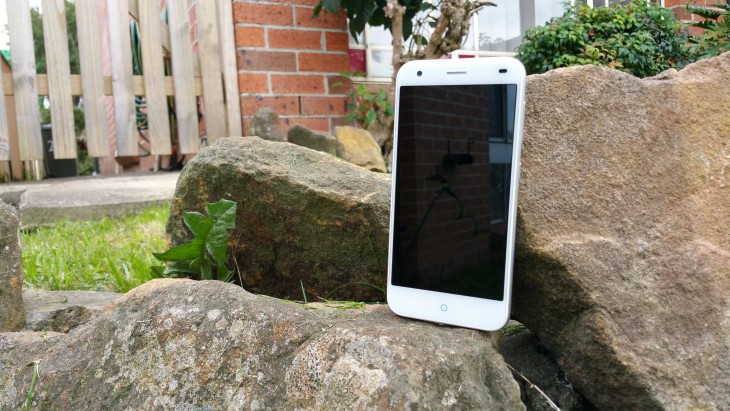
ZTE have begun their push into the mainstream consumer marketplace after being a white label manufacturer of devices for our telcos and it has seen the company slowly become both serious contender and competitor to the big boys not only overseas but also here within Australia and we have reviewed a few of their devices, most recently the Optus ZTE Fit 4G Smart phone.
ZTE have made it clear that it wants to become a household name within Australia and become the phone of choice for consumers who are after smartphones that can be considered as high end, with decent specs and a reasonable price.
We know from our recent review of the Optus ZTE Fit 4G Smart phone did offer some pretty good specs for a very low price.
So when the company announced that it would be bringing its own Aussie version of the mobile phone, we wanted to see how the Blade S6 stacks up both between its high end and mid range level phone but also whether it could even be the phone of choice for the lower end of the market.
The question for us is, can the Blade S6 which looks incredibly fantastic both in design, specs and price, really be a worthwhile smartphone to purchase? We take a look and see if it is and what the hype is all about.
- 700MHz compatible
- Vanilla unskinned stock Android experience
- Clear, bright & colour rich 720P 5” display
- Plastic design and materials makes the phone feel ‘cheap’
- Battery life in need of a little improvement
Design and Hardware
ZTE has been looking more and more between affordability with design and when you look at the Blade S6, they appear to have found a good balance. Now while the phone is made of a composite plastic but it’s not all the bad when you consider the price.
Yes the composite plastic does make the device feel a little cheap and personally I would have liked to see the back made of a least a nice polished brushed metal aluminium, however given the market ZTE are aiming for with the Blade S6, keeping the materials durable and cheap was the aim.
The front of the Blade S6 has a 5.0” IPS display which I will go into further detail further down, but suffice to say it’s quite nice. Staying on the front of the device we have the front speaker located in the top middle of the phone with the 5MP front facing camera to the left and sensors to the right.
Like the ZTE Smart Fit 4G, ZTE has again chosen to stick with capacitive buttons on the Blade S6, in a similar layout to their other phones. The smaller blue dot on the left hand side is your back button whilst the larger blue circle button in the middle is basically your toggle button to go out of apps or the app draw to the front home screen, whilst the small blue dot in the right hand side acts as the navigation setting menu to change wallpapers, manage apps, enter the full settings menu.

The right hand side of the phone has the volume rocker (up/down – high/low) located almost towards the centre of the right hand side whilst just located immediately below that is the standby/power on/off button.
Heading over to the left hand side of the phone and located in the middle on that side of the phone is the location of the Dual-SIM tray and MicroSD card tray.
Located at the bottom right hand side of the phone is location of the microUSB port and located again on the bottom of the phone is the microphone used for calls, recordings etc, whilst on the top left hand side near the corner is the location of the 3.5mm audio jack.
The rear of the Blade S6 houses the 13MP camera lens towards the left hand side, with the LED flash located much closer to the left hand corner, slap bang in the middle you’ll see the ZTE logo and apart from the rear facing speaker in the upper right, it’s pretty plain.
The Blade S6 does come with dual-SIM capabilities which is great if you’re after a device that can be both a work BYOD phone and your personal phone all rolled into one – an option which is becoming a must for a growing number of people. I know this is something I am considering moving too personally.
Display
The Blade S6 comes with a 5″ IPS HD display which though HD is not FullHD, offering a 1280 x 720 (294 ppi) resolution, though I have to say, it is quite beautiful. The colours are rich and its is a nice bright, clear screen which can is normally not something you can say with some devices in this price bracket.
That said, it would have been nice to have a full HD 1080p display but honestly whilst this could have had this feature, the 720p display really isn’t that bad and make photo’s seem really good and showing friends your pictures from the phone ensures they don’t have to hold it in a difficult view or way.
Camera
ZTE have decided to turn to Sony for its 13MP rear camera which utilises Sony IMX214 camera sensor technology. The camera has an f/2.0 aperture, 28mm wide-angle aspherical lens on top. This combination makes for a pretty great photo. pictures taken either outdoors or on a sunny day, seems to outperform photos taken on similarly priced rivals.
Just one note on the flash, it’s there but it does tend to completely over-saturate the image.
Shots taken of landscapes can and do look quite good with bold colours and little to no noise or grain shown even when displayed on my TV screen via Chromecast. Though any photos that are taken indoor or during the night do seem grainy, even when viewed on the Blade S6 screen.
The front facing 5MP is able to capture some quite good photo’s for those selfies if you addicted to taking a selfies, though there was some grain and noise in the photos which can be edited out or reduced via any of the photo editing apps I had installed. So should you require that ultimately perfectly smooth, glitz and memorable selfie, this is something you will need to factor in.
Lastly, the phone can produce up to 1080P video if required. The video is a bit grainy, but overall it’s not bad.
Connectivity
The Blade S6 comes with Dual Band (2.4/5.0GHz) Wi-Fi 802.11a/b/g/n/ac which basically ensures that connectivity whilst using WiFi is strong and lag or drop out free, which is good if playing data intensive games or streaming videos such as movies,TV shows or music whilst over WiFi.
The phone also has Bluetooth Smart V4.0 LE (Low Energy) meaning that connecting the Blade S6 to my Asus ZenWatch or my Logitech bluetooth audio speaker kept the same connection without stuttering or issues in general.
GPS wise, the Blade S6 GPS navigation offers pinpoint accuracy, able to provide me with my location to within a few metres, within just a few seconds which is good should you be on the road and need to find your way or location quickly.
Network connectivity wise, the Blade S6 does offer the ability to utilise the 700MHz 4G LTE spectrum used by two of our largest telcos here. However the Blade S6 can also connect the 1800MHz 4G network used by all three carriers.
The connection was strong when using the Blade S6 from the office or underground stations such as Town Hall in Sydney for data along with SMS and calling.
Performance
Performance wise, the Blade S6 comes with a 1.5/1.0GHz Qualcomm Snapdragon 615 64-bit Octa core CPU with 2GB DDR3 RAM under the hood to power the device, this ensures good performance whether playing a game or using an app. Whether doing simple or more advanced tasks the Blade S6 is able to handle these simple tasks without stuttering and freezing constantly.
Antutu Benchmarks
GeekBench
Opening up numerous apps and jumping between them such as Gmail, Facebook, Twitter, Google+, Simpson Tapped Out, QuizUp and SimCity Buildit didn’t miss or skip a beat. Though I did find it useful to restart the device after a couple of day usage just to free up the cache completely and stored memory for opened apps, just to keep performance running good without issues.
Sound
What can I say about sound here other than, it pretty much on par with any other Android smartphone on the market. With rear facing speaker, it’s often hard to hear music or audio being played on a phone, but ZTE have included a neat little design kink, a small dimple next to the speaker which elevates the phone slightly off a flat surface so that sound can escape – while it’s certainly louder, it doesn’t improve the sound quality.
When listening to various types of music and playing around with the music setting, I did find playing anything with a deep bass or dance music to not be the best with this speaker and it’s probably just as well because really the speaker should be limited for speakerphone usage or if playing background music in games.
Speakerphone wise, the rear speaker is clear bt again placing the Blade S6 on a flat surface despite the very small stand next to the rear speaker can make it hard to hear or understand callers at times depending if they have HD voice activated on their phone at the end of the day.
Calling wise from the front speaker was clear and the same can be said for the rear speakerphone function.
Battery
The Blade S6 comes with a 2400mAh Li-ion battery which is non removable and it is able to last the day with some medium or small usage, although if you’re a user who is between a medium to high smartphone user for the day will need to find that they will have to carry either MicroUSB chord to charge at the office or a wireless battery charger.
Personally, as a medium user I did find that when taking the Blade S6 off charge in the early morning between 8am or 9am and not getting home till about 7pm or later, that I would have a battery percentage of between 40% and 20% by the time I got home and would place the phone on charge.
Software
The Blade S6 runs Android 5.0.2 right out of the box and it is surprisingly quick and buttery smooth. ZTE Australia has made the decision to leave the launcher stock Android for our model, while the rest of the world receives a full Mi-Flavour UI, to put it simply: apps have been skinned with a distinctive Mi-Flavour UI.
Further ZTE have also tweaked other parts of the software, such as repartitioning the phone to provide the user with a single flat partition, the global model is partitioned which can restrict users depending on how they use a device.
ZTE Australia has stated to us here at Ausdroid for the purposes of the review, that the Blade S6 runs an unskinned version of Mi-Flavour 3.0 to keep to the vanilla Android experience that we like locally. The global model has Mi-Flavor 3.0 UI from ZTE which we removed.
ZTE have also repartitioned the entire device to provide the user with a single flat partition, the global model is partitioned which can restrict users depending on how they use a device.
Other than this the devices runs pretty much as you expect for Android 5.0.2 (Lollipop), however it is not sure as to whether or not the Blade S6 will get any further updates past Android 5.0.2, but we will keep an eye out for any news on further updates for the Blade S6.
Storage
The Blade S6 comes with 16GB Flash with 11.6GB user space, however this can be expanded further to 32GB via MicroSD card which really at the end of the day did seem like a lot of storage, considering I would mainly store either most of my songs and documents or presentations within Drive or my Box account in the cloud.
The ZTE Blade S6 has a maximum 32GB microSD card rating on paper, but if you happen to throw in a larger sized card, you might find some good things happening here. It’s not guaranteed, but well, we like to push the envelope.
Bundled Apps
The Blade S6 comes with the a variety of bundled software, such as the usual social media clients for Facebook and Twitter, but also some others such as AliveShare, Clean Master, Camera360, and WPS Office (Kingsoft office). There’s also applications to access the FM Radio, use the camera flash as a flashlight and various apps such as a Voice Recorder, Notepad and video apps.
ZTE has replaced a number of the stock Android apps such as camera, calculator, clock and messaging apps with their own Mi-flavoured versions, it’s nothing drastic and they work fairly well for the most part, it’s just interesting to see every company try to re-invent the wheel when replacing these stock apps.
An interesting choice to note is that ZTE uses Touchpal keyboard as their default keyboard on their phones. The keyboard is more responsive than other OEM built monstrosities we’ve seen in the past, so using a third-party more established keyboard for the task is one we applaud.
Of course if you like your default Google Apps you’ll find those, with all the usual suspects pre-installed as per the agreement.
ZTE Blade S6
- 2G: 900, 1800
- 3G: 850 MHz, 2100 MHz
- 4G: 1800 MHz(Band 3), 2600 MHz(Band 7), 700 MHz(Band 28)
- Dimensions: 144 x 70.7 x 7.9mm @ 154g
The Blade S6 offers some really great features and there really isn’t anything to dislike and I certainly do believe this is a close competitor to the Moto E and Moto G.
From a BYOD and personal mobile phone, or if you’re in the market for a dual sim device that doesn’t skimp on features at a reasonable price, then I would easily say the Blade S6 is the device you may want to think about purchasing.
I mean there really isn’t much to dislike about the device, based on the price, the specs and usability are all good and all pretty much tick the right boxes.
The ZTE Blade S6 is available through JB HiFi for $297 and that is quite reasonable for an unlocked 4G enabled smartphone that has really some great specs on its runsheet.



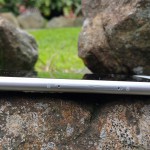

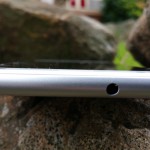
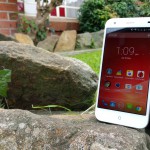












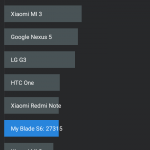


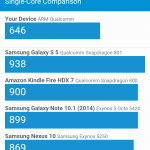
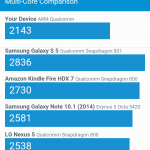
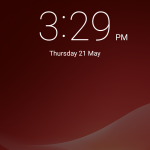
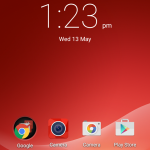
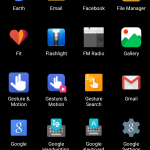



Bought this for my mate. Really good specs for that price. No issues in the first couple of days of usage so far.
Was however wondering if Ausdroid could tell us how it compares to Oppo Mirror 5s?
The specs are great for the price. You’d want to avoid it if you’re with Optus or Vodafone though. The lack of 3G 900MHz is a deal-breaker. Fine for Telstra though.
Thanx for the review. I see by your screen shots that it’s dual SIM. Does the second SIM support 3G / LTE??
Yeah…. I put a 64 gig card in my Moto g 4g and it recognized it and it worked even though it is stated as only 32gb compatible…. Just needed to format the card..
Deliberate design cues from Apple, might even fool some people. This looks like the phone you would buy for your mum!. Sorry mum?!
Thanks for the review. I’ve been running this phone on Telstra pre-pair for 6 weeks now (got it on launch day) and pretty happy with it from a bang-for-buck perspective. If anyone wants to ask any questions at all about the Blade S6, I’m happy to answer them 😉
Whoa, whoa! Could you make something clear?
Will the phones retail OS be unskinned or skinned?
Or is this some weird version they gave to you guys that we won’t see?
I bought one from JB Hifi day one. It comes with stock android.
Thanks. The review explains it oddly.
Stock Android. There are still a fair few non-standard apps installed but almost all of them are quick to uninstall or disable. ZTE has got some decent gesture controls built it but they can be individually enabled or disabled and some of them are even customisable. I use double shake to turn on flashlight (from either screen-off or from the lock screen) and find it very handy.
This is a great device for the price. Officeworks is selling them for $277.
Yep. Not bad for the money.
It’s nice that there are a few sub-$300 phones out there now that are “Good Enough”. It is sad the Moto G doesn’t seem like it will be keeping up.
How’s the battery life?
For me, battery life is above expectations. Not mind blowing but the Snapdragon 615 seems pretty efficient. I think the reviewer has got it right in saying if you’re a medium user (i.e minimum games, minimum YouTube watching but moderate web-browsing you should be fine with about 20% left up your sleeve at the end of the day.
The key difference with this phone and what makes is significantly better than the Moto G is the 2GB of RAM. I don’t think that point can be understated. Even if you run little more than Facebook/Messenger/Twitter on top of stock Android with the suite of Google Apps, there really is little head room. I tend to always have a few Chrome tabs open at a time and with 2GB of RAM they never have to be “re-drawn” by the system when you open up Chrome at various points throughout the day.